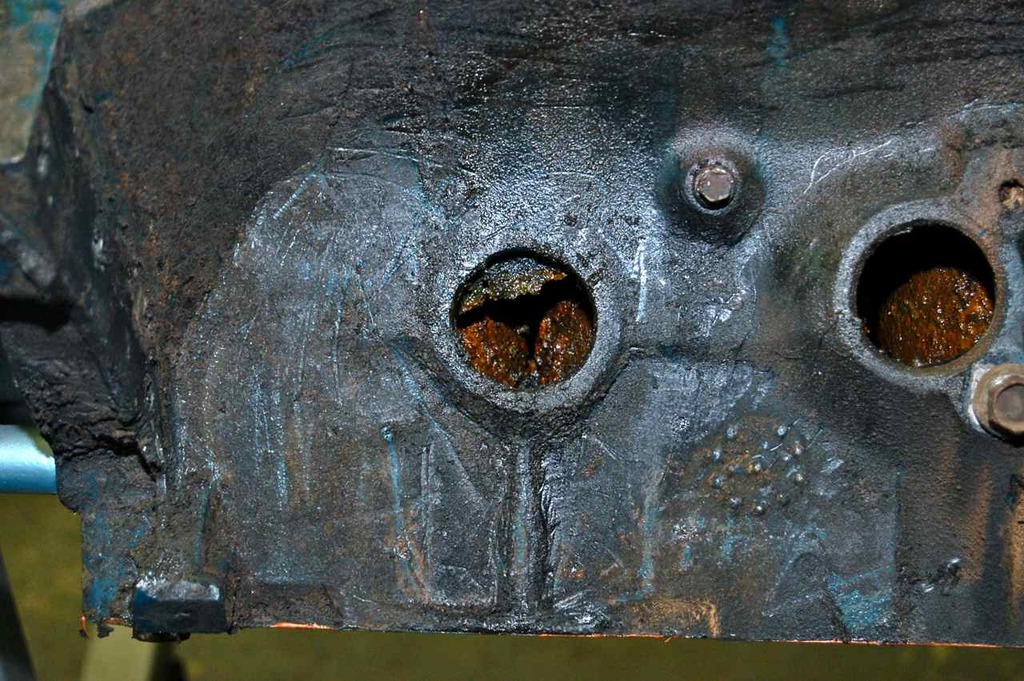Why NOT To Trust a Used Engine or One That Has Sat Unused
2023, November 14
Hello all,
I wasn't sure if this was worth posting, but then I thought about it and figured that it might help others with making good judgements and expectations when buying an old used car. As always it's buyer beware.
To be fair all of our old Fords we bought were advertised as non-running FE engines but the engine type doesn't make a difference in this venue. Even before these recent purchases, I have long concluded that any old used engine, running or not, is a write off value wise and must be torn down, inspected and almost always rebuilt. Although for this particular engine the ad stated it wouldn't take much to get running. As taken on direct face value, it didn't take much to get running, but it wouldn't last long.
This engine below is typical for an old engine that has sat around or has been abused then been unloaded on someone else. Just thought I'd share and a glimpse into why.
This 390 is from my 1968 Ford XL fastback. I bought the car as a basket case because I wanted a project. This is the first old Ford we purchased. The car came from and has always been a resident of Boulder Colorado. Rust was an issue but the engine wasn't seized, so I did my due diligence and rebuilt the essentials to get it running. It did run and idle rather nicely, burning oil constantly, but it ran. The C6 actually went into gear and after mending the front disc brakes and rear drums I could drive it round the subdivision. However a few minutes of warming up and anything over 1/4 throttle caused it to ping on what seemed like all 8 cylinders.
Here's the '68 390, nothing special, just another low frills, FE.

This drove me nuts, I doubled and triple checked timing, carb jetting, and even removed the thermostat for max cooling. Even with the COLD lamp now perpetually lit, it still pinged very badly — as in not drivable badly.
I realized that this is why the car was parked with just 68,000 miles on it. I ran out of ideas and one day, I said screw it, the engine has to be rebuilt anyway, so I floored it and sure enough not two blocks driven it lost power quickly and a loud tick came from up front. Turns out the engine lost 4 of the 8 cylinders with bent push rods and one bent intake valve. The severe detonation hammered on the large area of the intake and the pushrods couldn't take the strain.
Long story short, the cause of the detonation was a massive build up of lead and carbon on the exhaust valves, all 8 of them. It had to be damn near chissled off. After replacing the pushrods and intake valve it ran fine though it still burned oil which I thought was from the rings being plugged up and not function properly. There was virtually no ridge on the cylinder wall top so mileage was low.
Anyway, I started to work on the car, but it needed a frame, floor pans, truck floor, and doors so this project took a back seat to other cars needing less work. This engine was on a stand that I needed for another engine so it had to come apart to be stored away until I could rebuild it properly.
When I did the head work, I installed a new timing chain, water pump and fuel pump, as well as flush out the coolant and filled in a new mix with distilled water. If you notice from that photo that the new, not even 100 miles, water pump is already leaking. Even though I flushed out the old coolant, the new stuff mixes with the acidic sludge sitting in the bottom of the block which then rusted out the new water pump; the insides were just chunks of rust.
Add another reason why this engine would never be reliable even after fixing the upper end.

Nothing unusual here; this is relatively clean from me working on the heads.

Here's another soon to-be-trouble spot in reliability. From sitting so long, rust pits will form on surfaces where the oil has drained away. There are many little rust pits on the lifters and the cam lobes. With enough rust spots eating away at the hard surfacing the relatively soft cam will round down in short order. Not to mention this lifter is concave at the bottom whereas a new one is convex.


An oily mess, which contributed to the constant haze of blue smoke out the tailpipe.

You can really see which rings in these cylinders didn't want to play at all.

A toxic sludge in the bottom of the pan with gray mounds of lead slurry in the bottom.

All that grit in the sludge is from the bearings. The crankshaft was loose as a goose in the bottom, but the crankshaft was still bolted in with connecting rods. This engine probably struggled to keep oil pressure above the 4-6 psi it takes to turn off the OIL lamp.

Worn out bearings.

And there is crud trapped in the bottom of the bock that no amount of flush-n-fill would remove. This only to wreaks havoc with the rest of the cooling system.

This is why one should always be leery about buying a used old engine or car without inspecting thoroughly.
Cheers.
‹ the end ›